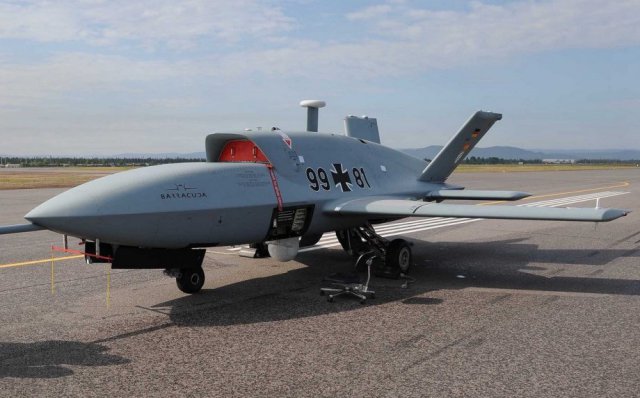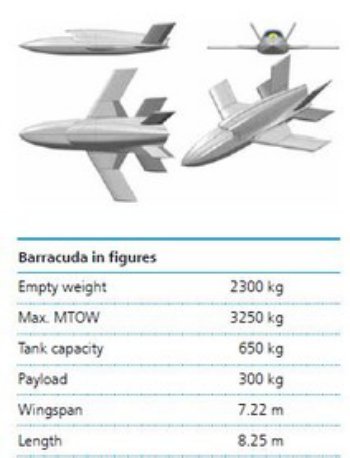
What began in 2003 as the “deep black program” under the project name “Barracuda” was completed in December 2015 as the Agile UAV in NCE. The unmanned air vehicle platform was initially designed to test new technological developments with just a small number of flight trials. Following an 18-year utilisation and development phase, the Agile UAV is now one of Europe’s leading technology Demonstrator Systems.
Industry partners Airbus Defence & Space (formerly EADS-MAS), Patria, and RUAG – supported by the German Ministry of Defence (BMVg/WTD), the Finnish Air Force (FinAF), and armasuisse – joined forces to develop a unique, highly automated unmanned aircraft system. This Unmanned Aerial System (UAS) provided the basis for successfully developing new UAS technologies.
Agile UAV in Network Centric Environment (NCE)
In connection with the development of the Barracuda, the German Ministry of Defence launched its “Agile UAV in Network Centric Environment” project in 2005. The term “agile” does not refer to the aircraft’s flight performance, but rather to its wide range of possible deployments and the flexible responsiveness of one or several different UAVs operating in a single network. The aim of the project was to develop a networked system comprising numerous components, such as ground control stations, several UAVs, aggressor units, and various sensors that communicate and respond to each other in real time.

As part of this German programme, the Barracuda was offered to customers for the first time. Over the course of the project, RUAG, together with armasuisse and its German and Finnish partners, identified three work packages for further development: Airworthiness & Certification, Concept of Operations, and Platform Technology Aspects.
Concept of Operations
Concept of Operations describes the collaboration, tasks, command structures and data flows of all components in the network structure. A range of simulation tests were carried out using the relevant hardware in order to monitor how the various UAVs, targets, and sensors work together. The main focus here was on meeting the safety network’s information requirements. RUAG’s simulation exercise was linked with that of Airbus and involved running numerous detailed scenarios.
The results from the test offer new, trailblazing insights into operating flights with a large number of networked UAVs and manned aircraft. These findings – particularly with regard to allocating roles – will also influence the development of similar systems in Switzerland in the future.
A glimpse into the future
The expertise gained in the various sub-Areas during this collaboration project will play a role in the further development of new technologies and products for unmanned Aerial systems. We can also use these insights to improve the development of manned aircraft, too.
Source: RUAG
